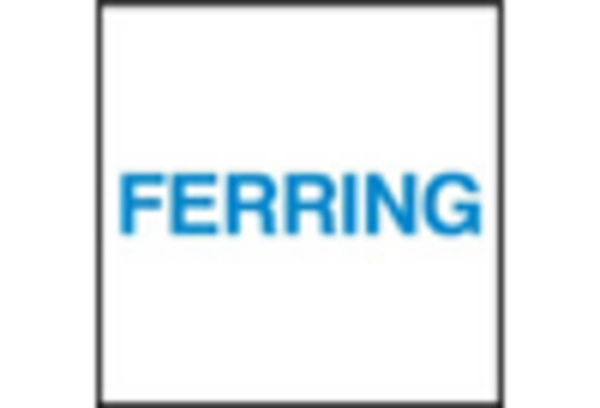Regulatory Support and Market Approvals
Regulatory support and streamlined approval processes for new drugs are vital drivers of the genitourinary drugs market. The US Food and Drug Administration (FDA) has implemented various initiatives to expedite the review and approval of innovative therapies, particularly those addressing unmet medical needs. This regulatory environment encourages pharmaceutical companies to invest in the development of new treatments for genitourinary disorders. As a result, the introduction of new drugs into the market is expected to increase, providing patients with more options for managing their conditions. This supportive regulatory framework is likely to foster growth in the genitourinary drugs market, enhancing the overall treatment landscape.
Growing Prevalence of Genitourinary Disorders
The increasing incidence of genitourinary disorders in the US is a primary driver for the genitourinary drugs market. Conditions such as urinary tract infections, benign prostatic hyperplasia, and bladder cancer are becoming more common, affecting millions of individuals. According to recent estimates, approximately 50% of men over 50 experience symptoms related to prostate issues, which significantly contributes to the demand for effective treatment options. This growing prevalence necessitates the development and availability of innovative therapies, thereby propelling the market forward. As healthcare providers seek to address these conditions, the genitourinary drugs market is likely to expand, with a focus on both pharmacological and non-pharmacological interventions.
Innovations in Drug Formulations and Therapies
Innovative drug formulations and therapies are transforming the landscape of the genitourinary drugs market. Recent advancements in drug delivery systems, such as sustained-release formulations and targeted therapies, enhance the efficacy and safety profiles of medications. For instance, the introduction of novel agents that specifically target cancer cells in bladder cancer treatment has shown promising results in clinical trials. The market is witnessing a shift towards more personalized treatment approaches, which may improve patient outcomes and adherence. As pharmaceutical companies invest in research and development, the introduction of new and improved therapies is likely to stimulate growth in the genitourinary drugs market, catering to the diverse needs of patients.
Aging Population and Increased Healthcare Access
The aging population in the US is a crucial factor influencing the genitourinary drugs market. As individuals age, they are more susceptible to various genitourinary disorders, leading to a higher demand for medications. The US Census Bureau projects that by 2030, around 20% of the population will be 65 years or older, which will likely increase the prevalence of age-related genitourinary conditions. Furthermore, improved access to healthcare services, including insurance coverage and telemedicine, enhances patient engagement and treatment adherence. This demographic shift, combined with better healthcare access, is expected to drive growth in the genitourinary drugs market, as more patients seek effective management options for their conditions.
Rising Awareness and Education on Genitourinary Health
Increased awareness and education regarding genitourinary health are driving the growth of the genitourinary drugs market. Public health campaigns and educational initiatives have significantly improved understanding of genitourinary disorders, encouraging individuals to seek medical advice and treatment. This heightened awareness is particularly evident in the context of sexually transmitted infections and prostate health, where early detection and treatment can lead to better health outcomes. As more individuals become informed about the importance of genitourinary health, the demand for effective medications is likely to rise, thereby positively impacting the genitourinary drugs market.

















Leave a Comment